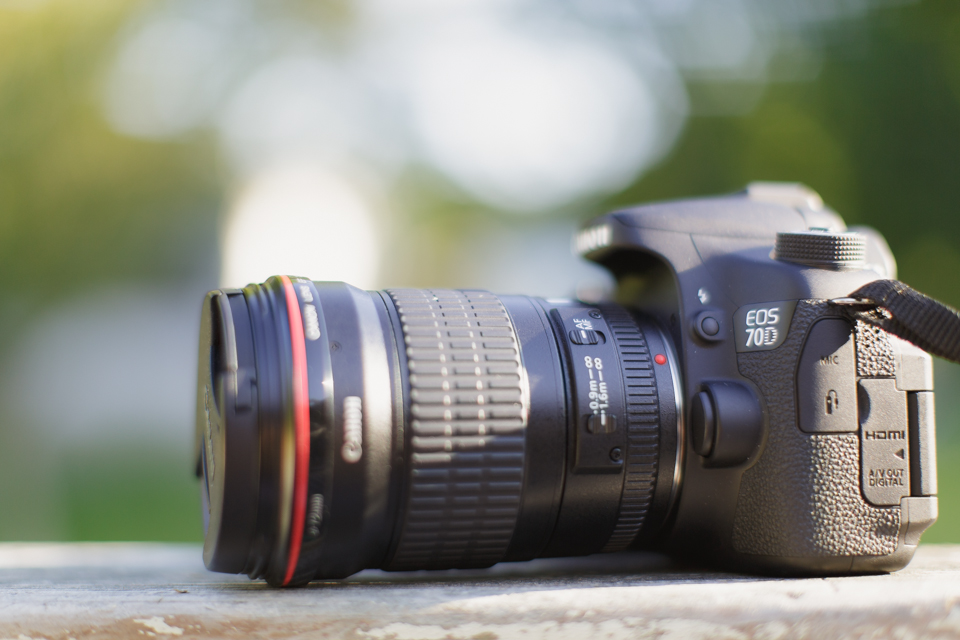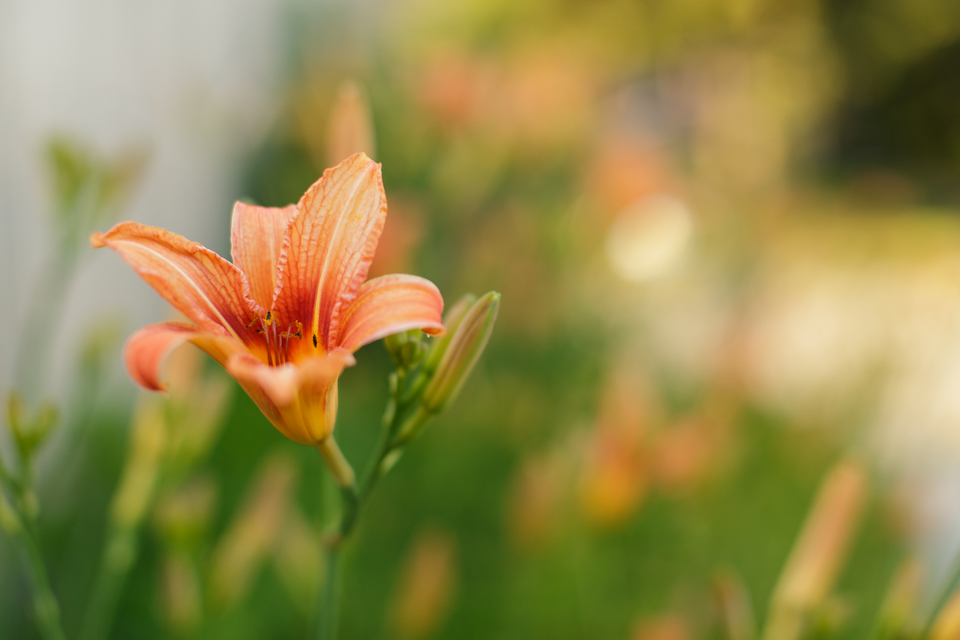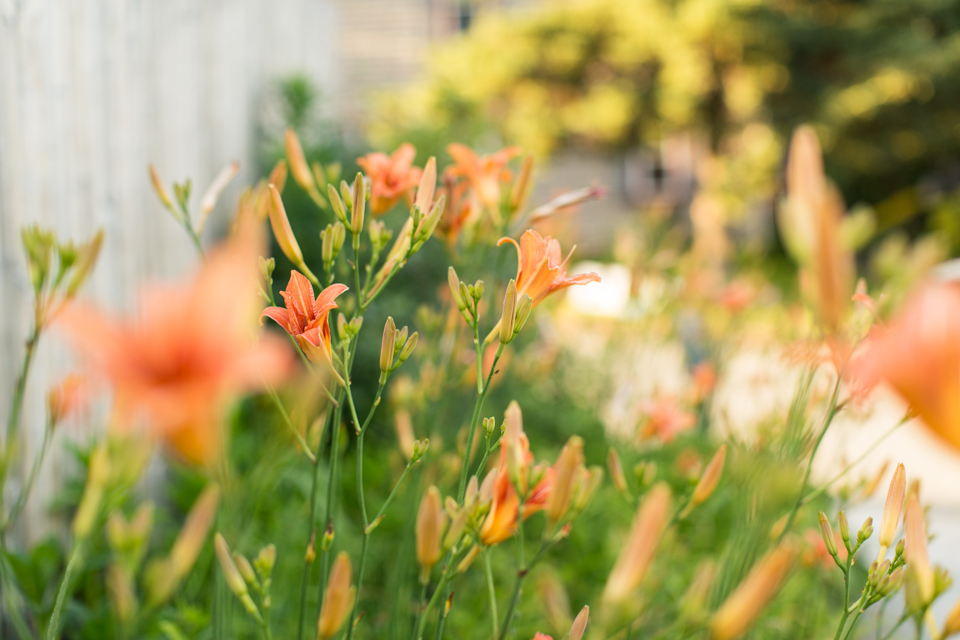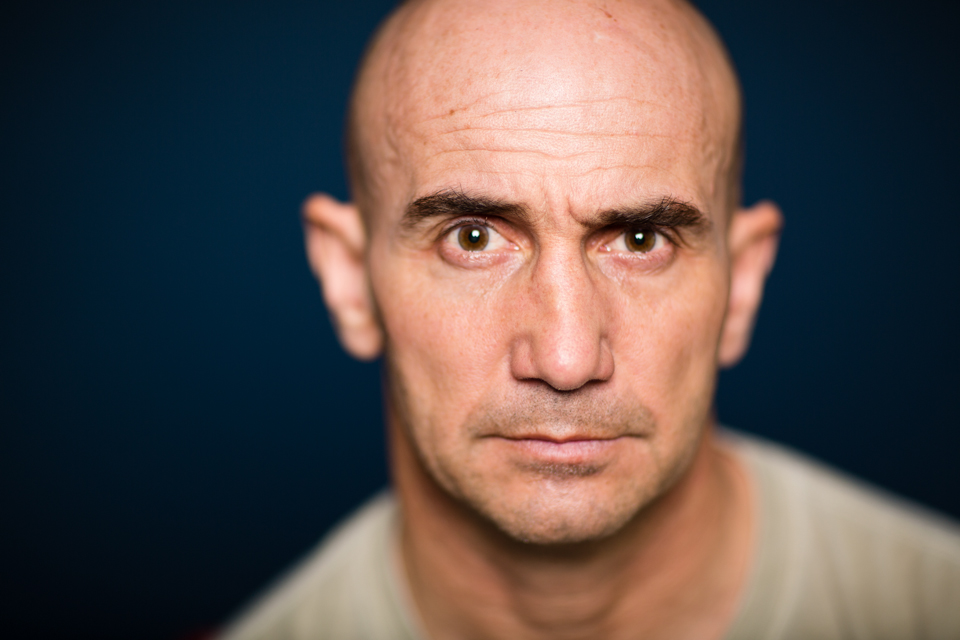Featured Products
Whether you’re a hobbyist or a pro, getting perfect focus for your photos is one of the most important parts of photography. There’s a lot to know about getting sharp pictures though, and sometimes it’s confusing to know what to focus on (pun intended…ha ha) if your images do not appear to be sharp or in focus. This post will give you a better understanding of how focus works and what you can do to improve the focus in your images.
First, the basics.
Autofocus vs. manual focus.
Modern DSLRs all have the ability to autofocus. This means that they will automatically pick on a specific point or area chosen by either you or the camera. The autofocus systems in DSLRs are getting more and more advanced and are quite accurate. Most cameras have focus motors for autofocus built into the camera. However, some do not, and require that the lens has a focus motor in order to autofocus. Be sure to understand whether your camera autofocuses via the body or the lens so you know which lenses are appropriate for your camera if you want to be able to autofocus.
Even though DSLRs have very good autofocus systems, you still are able to manually adjust your lenses. This means that you are controlling the focus of the lens vs. the camera focusing the lens. Note that manual focus is not the same as shooting in manual mode. You can shoot in manual mode and use autofocus. You can also shoot in modes other than manual and manually focus your lens. Switching a lens from auto to manual is easy. It is nearly always done via a small switch on the lens body, usually indicating “AF” and “MF”, as pictured below. There are some lenses that even allow you to manually fine-tune while the lens is set to autofocus; this is called autofocus override. If you are not sure whether your lens can do this, check its specifications.
Should I even use manual focus?
This is a good question. Autofocus systems are very good, so when and why should you choose to do things manually? For the most part, autofocus is the way to go. It’s fast and accurate. Also, modern DSLR focus screens are not built to handle manual focusing like the focus screens in old manual-focus film cameras were. It is extremely hard to manually focus DSLRs at wide apertures because their focus screens are not made for this purpose. That said, there are times when you will want or need to use manual focus. Some lenses are manual focus only, so your only choice will be manually focusing such a lens. There are modern lenses that are manual focus only and there are also older lenses which can be fitted onto modern cameras that will need to be manually focused. Another situation where manual focus comes in very handy is shooting macro. Macro photography is a very precise discipline and the photos tend to have a very thin depth of field. This can sometimes confuse the autofocus system, or autofocus may not land precisely where you want, so you may be better off manually focusing to get a shot you want with the focus where you want it.
There are lots of focus points. How should I use them?
Your DSLR has lots of focus points. Maybe even lots and lots! The most important thing is to use them all. Not necessarily at the same time, but you should rely on all your focus points to get perfect focus…so use them!
So what are the best ways to use them?
Above all, choose your focus point(s). Don’t let the camera choose them for you! I repeat, choose your focus point! When the camera chooses your focus point for you, it’s just taking a wild guess as to where it thinks the focus should be. Something in the photo will be in focus….but it might not be what you want. Check out the example shots below. In this first photo, I chose my single focus point so that the lily would be in focus.
Now look at the next photo. Everything in the next photo is the same as the first one: lens, settings, my position. The only thing I changed was that I changed the focus point selection from single point to having the camera select the focus point. As you can see, my intended lily is no longer in focus but a flower towards the middle has now become the focus point. This is what the camera randomly chose.
Should I use single point? Multiple points? I’m so confused!
I don’t blame you. There are sometimes an overwhelming number of configurations of focus points on our cameras, and it’s hard to know which one to choose. Some cameras have less focus point configurations than others, but most all have at least the ability to choose one single point and also a somewhat larger group of points. Single point focus can be used for a lot of photo types. It’s king for portraits. Put the focus point on the eye of a single subject, or focus 1/3 way into a group of people with a single point. Use it for landscapes and put your focus just where you want it. You can even use it for sports if you’re good at tracking subjects. Note that when you use single point focus, it can be ANY single point, not just the center point. Using multiple points can be helpful when shooting sports with fast moving subjects who are somewhat far away and are hard to track and keep under one single point. If your camera has a more advanced autofocus system you may have multiple options when it comes to using more than one focus point at a time. Take the time to understand what each one does so you can use them to their fullest. Multiple point focus is not really one to use when shooting single or group portraits. But if you are taking a portrait of some sort using this mode, keep this in mind: there are times when you have multiple points enabled that it may look like there are focus points on several people’s faces. This does NOT necessarily mean that each person will be in focus. Even though the camera is showing multiple focus points, it’s actually only picking one of those points, the point with the most detectable contrast, to focus on. Be sure that your depth of field is wide enough to fit your entire group.
What are the autofocus drive modes about?
These modes govern how the focus motor in the lens/camera performs. Depending on your camera brand, the modes will have different names. Single shot/AF-S mode means that the focus motor comes on just once when you use your shutter button or back button to focus. It does not keep running. Focus is in this single place until the camera refocuses with another half press of the shutter button or press of the back button. This mode is great for portraits and landscapes. AI Servo/AF-C mode means that the focus motor continues to run while focus is tracked on a moving subject. In this mode, the shutter button or back button is kept pressed while tracking the subject in order to keep the focus motor running. This mode is great for any subject that moves (sports, animals, children on the move). It is not generally used for portraits.
What is toggling my focus points about? How about focus and recompose?
Toggling your focus points means that you are choosing your focus point yourself and you are moving, or “toggling” that point around until you pick the point that is over your intended area of focus. Today’s cameras are made for toggling! There are so many focus points in them…use them! Toggle away!
Focus and recompose is a method where you lock focus on a subject (usually, but not always, using the center point), then keep the shutter button half-pressed while you recompose the shot to place the subjects where you wish. Then you take the photo. In theory, focus should stay locked on where you initially placed it. However, this method can sometimes become problematic, especially when you’re using wide apertures with very thin focal planes. Focus is on a plane…think of a piece of glass that extends up and down and side to side infinitely, but its thickness depends on several factors, including aperture. When your aperture is very wide, that “piece of glass” is very, very thin. Recomposing can cause the focal plane to shift (think of moving that thin piece of glass slightly), and that can cause your intended focus point to shift. Both photos below were taken with the same settings. The focal length was 85mm, and the aperture was 1.4. The first shot was taken by toggling my focus point to my subject’s eye. His eyes are in sharp focus. In the second photo, I focused and recomposed. In that photo, his eyebrows are in sharp focus but his eyes are fuzzy. My focal plane, which is very thin at 1.4, was shifted when I recomposed.


Sometimes it is necessary to focus and recompose. I occasionally take photos where my subject is somewhere outside the range of where my camera’s focus points reach. So, I will focus and recompose in those situations. If doing so, it’s just important to try as hard as possible to not move your focal plane, and if possible, use a somewhat narrower aperture which will help.
My photos aren’t in focus. What should I do?
There could be a number of reasons why your photos are not in focus. Try to troubleshoot using the following list:
- Your depth of field with the aperture you’re using is too thin to get everything you wanted in focus.
- Your camera is choosing your focus point and is not putting it where you want it.
- You are trying to focus on something closer than your lens’ minimum focus distance (all lenses have a minimum focus distance. In general, except with macro lenses, the longer the focal distance, the farther away the minimum focus distance. Some lenses have it marked on the lens barrel. If not, you can check online or in your lens’ manual for this information.)
- Your shutter speed is too slow, causing motion blur
- You were shooting in very low light and it was difficult for your camera to lock focus.
- You may have the autofocus drive mode set incorrectly (i.e. using single shot on a moving subject, or using Servo/continuous focus on a still subject. Both of these can cause blur.)
- You are shooting on a tripod and have IS/VR on. This function should be switched off when the lens is on a tripod.
- Your lens has a true autofocus issue. Often this is just a slight issue where the lens is focusing a bit in front of or in back of where you would like it to focus. To test that it is the lens, you should put your lens on a tripod and take photos of something such as a ruler to see if your focus falls where you intend. You can also find charts online to test focus. If you find your lens’ focus is off, you can perform adjustments yourself if your camera has autofocus microadjustment or fine tuning options. If your camera does not have this option, you will need to either send the camera to the manufacturer or bring it to a camera shop to have the adjustment done. If the issue is that the autofocus on the camera is actually damaged or broken, this would need to be corrected by the manufacturer or a camera repair shop and would not be able to be corrected by micro adjustment.
Now go out there and get those sharp images you’ve always wanted!
Amy Short is a portrait and maternity photographer from Wakefield, RI. You can find her at www.amykristin.com and on Facebook.
No Comments
Leave a Comment
You must be logged in to post a comment.







































Very informative post 🙂
I’m not sure I understand what you mean by “focusing 1/3 way into a group”. Could you explain this? So for group shots (2 or more people?) single point should be used?
Karen: I mean that your focus point should be approximately 1/3 of the way into the group, front to back. Say you have six rows of people…focus on someone in the second row as that would be 1/3 way in. Yes, single point would be used for group shots.
Thank you for this post, very helpful! I’m a hobbiest still learning how to profect my craft. I recently shot a reception for a family member, I had a lot of trouble locking my focus and getting my camera to fire in the low light but I was using a speed light with a softbox so once I did lock focus and fired my photos were properly exposed. How do I properly lock my focus in low light so that my camera will fire so that I will have sharp photos every time and not miss key shots? Thanks!
What about back button focusing? How does that come into play? Just learning it and it seems confusing!
Rachel: Locking focus in low light has to do with a few things. It can be a factor of the camera body itself; some are very good at locking focus in low light (especially with the center focus point) while others aren’t. There are also lenses that have issues locking focus in low light. One thing that can help when you are using a flash is if your flash has a focus assist beam, which will help the camera realize where it needs to focus. Not sure if your flash has this or not; if it does, it sounds like it may not be enabled. Marla: I actually wrote another article for MCP about back button focusing that was published not long after this article. If you search the blog you will find it.
So I have always used BBF and I recently upgrade from Mark II to III. My first two photo shoots I have not been getting my crisp shots that i normally capture. I am struggling with my focal points settings. any advice? Should I calibrate my lens? Any advice is appreciated.
Amy-So I have always used BBF and I recently upgrade from Mark II to III. My first two photo shoots I have not been getting my crisp shots that i normally capture. I am struggling with my focal points settings. any advice? Should I calibrate my lens? Any advice is appreciated.
Hi Christy, I have a 5D Mark III as well and get sharp photos. A few questions: is this happening with all your lenses? What focus point setup are you using and what focus mode? Are you seeing that focus is falling in front of or behind your subjects or that the photo is just soft in general? I use one shot mode with one focus point that I toggle to where I need it for portraits and anything that doesn’t move. For moving things (like sports) I use AI Servo and will often use one of the expansion modes (usually single point with 4 expansion points). You can test your lenses to see if they may need to be calibrated and if so it’s very easy to do on the Mark III.
How can I focus on any subject using my focus points in the view finder ? It is soo difficult for me to blur foreground and background both in portraits?